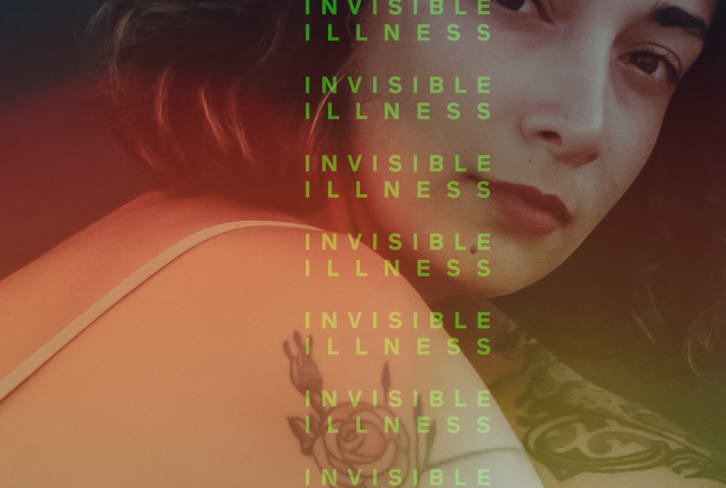Advertisement

One of the hardest things to come back from is a spiral into depression. It kicks you into a vortex and swirls around you, taking you deeper and deeper into the darkness, eliminating your capacity for hope. When hope fades, anxiety flows in and your positive reality disappears. Then, an illogical mind takes over and convinces you that life isn't worth living and there is no way out of the sadness. It is like trying to retrieve a goldfish from going down the drain, a slippery proposition. There is, however, always hope. We just have to find a crack through which the light can shine.
Therapy is a great resource for dealing with depression. And, if your therapist thinks medication is necessary in your case, don't discount that. Do your research; get a second, third, and even fourth opinion until you have enough information to make you feel confident with your treatment plan. It's your brain and your body—never forget that you're in charge. But if you're looking for holistic depression treatment alternatives to use either independently or as part of an existing treatment plan, these are some of the most effective options I've come across in my career as a coach and spiritual counselor:
1. Try tapping.
Otherwise known as Emotional Freedom Technique, this involves tapping your fingers on meridian points on the body that can release energy blockages. The efficacy of the technique on depression, especially in young people, has been validated in several studies1. Think of it as acupuncture without the needles. Start with your hand and begin to karate chop your other hand. Then, with your index finger and middle finger, start tapping the top of your head and work your way down, tapping for a few seconds on each of your meridian points. As you go, repeat positive affirmations until you feel your stress dissipate. Here's a step-by-step guide to the tapping process.
2. Meditate every day.
I cannot recommend meditation enough. There is a multitude of research that shows that meditation is the foundation of a peaceful existence. I wake up every morning and head straight to my meditation corner before I do anything else. If you're a beginner, I recommend a guided meditation to help you stay focused during the meditation. Meditating is like a brain workout, and practice makes perfect. As time goes by, you will find it easier to manage your thoughts. Over time, this will build into an overall positive attitude.
3. Nourish your gut.
So many of us are emotional eaters. We don't realize that trying to distract ourselves from unpleasant emotions by eating something rich, sweet, or salty is actually quite likely to make us feel worse. They call the stomach the "second brain." It's filled with important neurotransmitters and has a profound impact on your mental state (seriously!).
Did you know that approximately 90 percent of your serotonin is produced in your digestive tract? Serotonin is key to mood regulation and if your levels are out of whack, it can negatively affect your mood, appetite, sleep, memory, and sex drive. If you depend on sugar to boost your mood regularly, you're actually more likely to suffer from mood disorders down the line.
Some snacks that promote the production of those "feel-good" chemicals are pumpkin seeds, brown rice crackers, beans, sliced turkey (organic, please), Greek yogurt with berries and nuts, black tea, dark chocolate (75 percent cocoa), and fatty fish like smoked salmon, sardines, and anchovies.
4. Sleep well.
Promote restorative sleep by replacing nighttime anxiety with a relaxing ritual. Diffuse essential oils, journal about the day you had, and write a to-do list for tomorrow, so you can go to sleep feeling calm and clear-headed.
5. Change your relationship with technology.
Almost without fail, my clients find this shift the most difficult to make—but it has the most significant payoff, too. A report from the National Sleep Foundation found that 95 percent of people who used an electronic device within an hour of bedtime reduced the melatonin in their system by 50 percent. Melatonin is a chemical that helps to regulate circadian rhythms. That's one benefit of sticking with a good old-fashioned paperback. Save the smartphone for your morning commute. If you can cut your screen time by 25 percent, the difference in your sleep will be—wait for it—night and day.
6. Incorporate essential oils into your self-care routine.
Buy a diffuser and some relaxing essential oils to diffuse while you're working, spending time in your home, and before bedtime. If you're not sure where to start, try Doterra. Doterra Peace combines vetiver, lavender, and ylang ylang to calm and reassure you in stressful moments. Doterra Cheer boosts positivity with a proprietary blend of wild orange peel, star anise, vanilla bean extract, and more. If you're not interested in investing in a diffuser, just apply one to two drops of your chosen oil to your hands, your heart chakra, and anywhere else you feel moved to place it. Breathe in the scent throughout the day whenever you need a moment of calm or burst of joy.
7. Connect with nature.
One of the greatest tools for fighting depression and anxiety is literally right in your backyard. Give forest bathing a go, try a walking meditation, or just call it a walk. Whatever you call it, however you do it, spending time in nature is associated with better mood, increased energy, and a decrease in stressful thoughts. So, why are we spending so much time inside, again?
8. Reinvent yourself.
A hallmark of depressive states is being stuck in a disempowering story. You come to believe a disempowering story about yourself, for whatever reason, and that story is reinforced every time you tell it. To continue in that pattern is the best way to ensure that you remain in the depression spiral. Or you can choose to take back control of your story. The next time your disempowering story comes up—or just the next time you have a few minutes—reframe that story by writing it from a different perspective in your journal. Give yourself the opportunity to believe something other than the worst. Even if you don't believe it all the time yet, you're creating space for yourself to see hope. When the old story creeps back in, revisit the new story you wrote and remind yourself to live from that perspective going forward.
Watch Next
Enjoy some of our favorite clips from classes
Enjoy some of our favorite clips from classes
What Is Meditation?
Mindfulness/Spirituality | Light Watkins
Box Breathing
Mindfulness/Spirituality | Gwen Dittmar
What Breathwork Can Address
Mindfulness/Spirituality | Gwen Dittmar
The 8 Limbs of Yoga - What is Asana?
Yoga | Caley Alyssa
Two Standing Postures to Open Up Tight Hips
Yoga | Caley Alyssa
How Plants Can Optimize Athletic Performance
Nutrition | Rich Roll
What to Eat Before a Workout
Nutrition | Rich Roll
How Ayurveda Helps Us Navigate Modern Life
Nutrition | Sahara Rose
Messages About Love & Relationships
Love & Relationships | Esther Perel
Love Languages
Love & Relationships | Esther Perel


















